Categories
Subjects
Authors
Artists
Venues
Locations
Calendar
Filter
Done
December 5, 2017 – Review
“The Undercover Economist”
Stefan Heidenreich
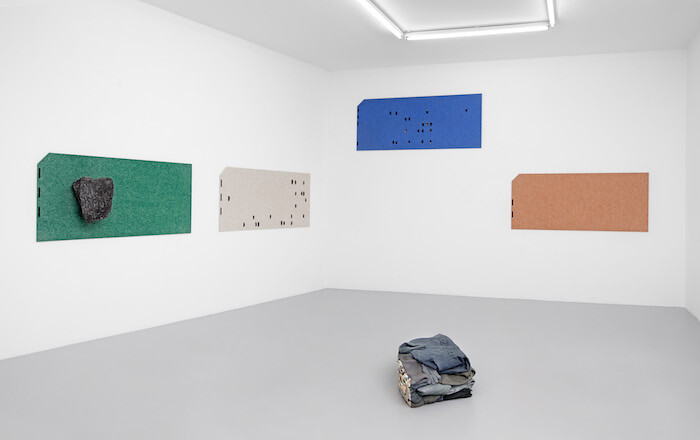
For some people, economy is mostly about money. But that is stupid: economy is actually about something else. Money is just the medium conventionally assigned to all tasks understood as economic. In the end, money is just a medium. For all those who firmly believe that the medium is the message, this might resolve the issue. In general I tend to count myself among these late McLuhanians, but when it comes to economy, I beg to disagree. Economy is not about money. It’s about distribution. And at this task, money performs worse and worse, as we know.
This misalignment hasn’t served the art world badly so far, at least for a small chunk of it. Maybe in a near future we will learn to read much of contemporary art’s output as an undercover service to this weird cult of liquidity.
The group show “The Undercover Economist” is centered around a sculpture by Liz Magor, titled Carton III (2006). Seen from the entrance of the gallery, it looks like a pile of old workers’ clothes. Shoes at the bottom, some trousers, a thick woollen pullover, and a heavy gray shirt on top, all neatly folded. Now, as if carried from one place to …
September 20, 2016 – Feature
Berlin Roundup
Matthew Evans
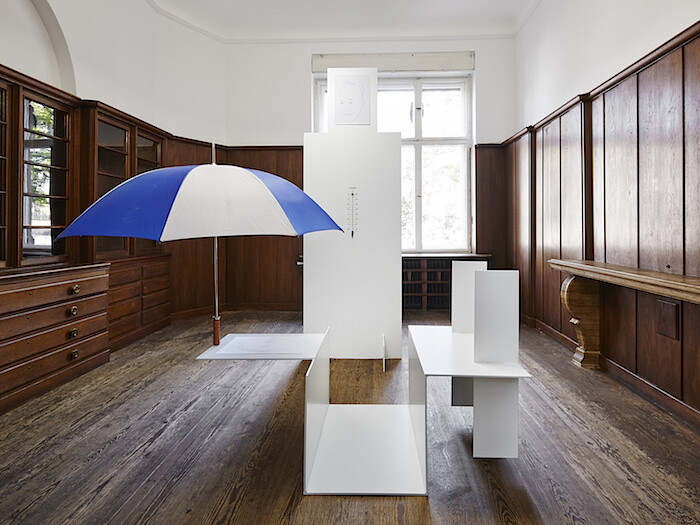
Berlin affluence is an oxymoron that might describe something in the big gap between pilsner and champagne, or pork schnitzel and sous-vide. Events like Berlin Art Week and its commercial fair abc art berlin contemporary have been pushing the German capital onto the national and international buyers’ tour for nine years now. It remains an odd positioning, as Berlin isn’t an obviously digestible city for many collectors; it lacks their creature comforts: the ubiquity of restricted access and unaffordable prices with enough locals who can afford to keep them that way. And art fairs (not to be confused with life) are most successful—and most distracting—when the rich feel hungry and foot the bill for the entertainment. But it’s an important exercise to distinguish between wealth and security (not to be confused with fear). The former is an uncertain orgasm of contrasts, which has become aesthetic cliché, while the latter is more interesting and maybe even radical today. Without the pressure (and pleasure) of fast and fat capital in recent history, Berlin has profited from this advantage, and although events like abc might be experimenting to revise that, the city still remains at one remove, which is a privilege, because the …
April 10, 2014 – Review
Derek Boshier’s “Change”
Ana Teixeira Pinto
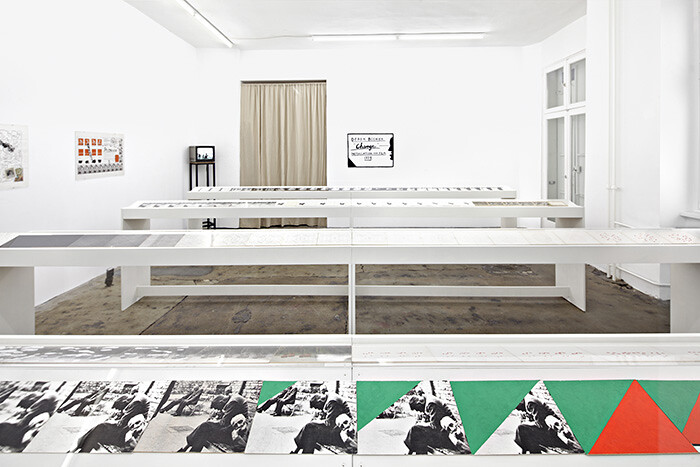
Before it became a commercially viable mode of artistic production celebrating the hegemony of the market over the social, Pop was—albeit briefly—an art of critique. When popular mass culture motifs where first adopted by contemporary artists in the early-1950s, they seemed to announce a revival of Dadaism. For Eduardo Paolozzi, the Independent Group, and Richard Hamilton, photocollage—a technique Dada invented—was the main mode of Pop production.
Emerging out of the horrors of trench warfare, Dada’s emphasis on rupture was not a mere aesthetic gimmick. Whereas the photographic montage commonly used in Victorian fantasy postcards fused all elements together to create an illusion of continuity, the Dadaist photocollages—which as Walter Benjamin noted, typically interrupted the context into which they were inserted—made the artifice visible by fully displaying the sutures and cuts to which their images were subjected. Reciprocating the lacerations inflicted by mortars and barbed wire, photocollages make manifest that the present is composed of manifold irreconcilable states—that every actual thing is a tangible unity of opposed determinations.
Derek Boshier—whose current exhibition at Tanya Leighton Gallery constitutes his first solo show in Berlin—belongs specifically to a British Pop tradition, which is to say, his work is perhaps closer to that of contemporary British …
May 6, 2013 – Review
Aleksandra Domanović’s “The Future Was at Her Fingertips”
Stefan Heidenreich
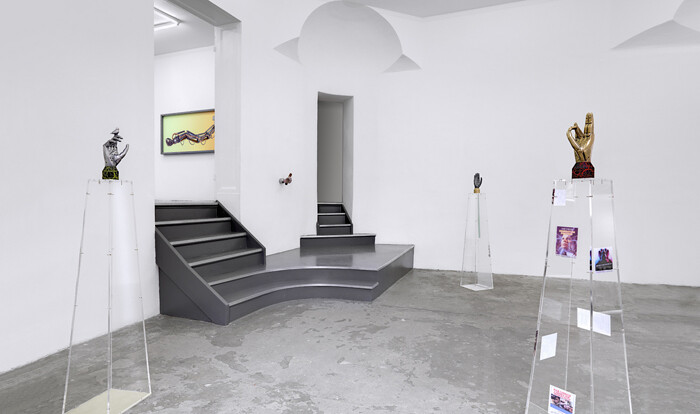
It was in 1843 that Ada Lovelace, daughter of Lord Byron and a friend of Charles Babbage, sketched out a concept for machine calculations. Today she is considered the first computer programmer. Lovelace’s claim to fame comes as the first entry in a timeline that is given as a handout to accompany Aleksandra Domanović’s exhibition.
“The Future Was at Her Fingertips” reads the title of the show, which leaves us with two questions: one is a matter of time, the other of agency. As the future “was,” is it now over? Or did it never happen? Furthermore, having had it at her fingertips, did she ever manage to grab it? Or did she let it escape? One thing is certain: we know from the phrase that it was a woman’s future.
In 2012, Domanović did an interview with the Slovenian computer scientist Borka Jerman Blažič. Back in 1991, Blažič had registered the domain .yu and introduced the first Internet services to the then Yugoslavia. One year later, the country began to violently tear itself apart. Domanović was born in the former Yugoslavia, in the Serbian city of Novi Sad, but grew up in the part of the country which later became …
July 5, 2010 – Review
John Smith’s "Flag Mountain/Black Tower" at Tanya Leighton Gallery, Berlin
Ana Teixeira Pinto
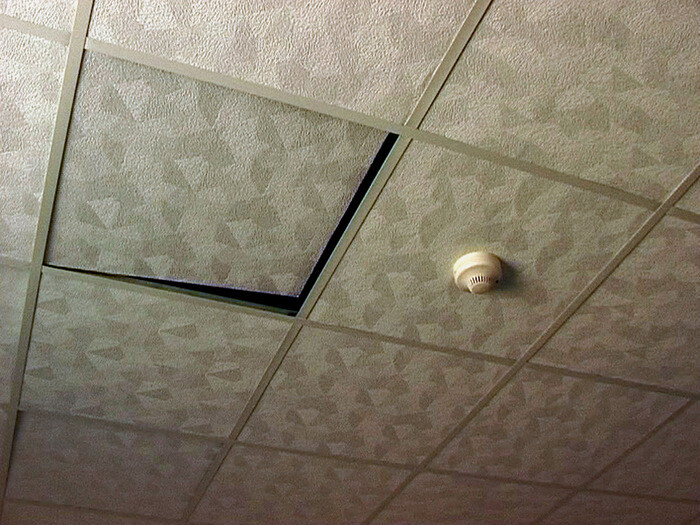
The reason why things don’t remain the same is because they were never thus. Everything contains manifold dialectical possibilities. A man’s home might be his castle, yet no castle is a monolith. No hotel room is a monolith either. In the Bethlehem Inn, the drop ceiling above John Smith’s head flutters in the blowing breeze. The artist films the flapping panels while telling us that the hotel where he is now staying was requisitioned by the military and hastily renovated thereafter. The window has a privileged view over the Israeli-built West Bank wall, which looks as shoddy as the room’s ceiling. Precariousness is the handmaid of oppression. Nothing does a better job at disrupting communal ties than the wasteland of a terrain vague, be it in the Middle East or in East London.
Part of the “Hotel Diaries” series, the aforementioned video, Dirty Pictures (2007) is one of three films currently on display at Tanya Leighton Gallery. Together with The Black Tower (1985-87) and Flag Mountain (2010) they represent some of the recurring and resurfacing motifs of John Smith’s cinematography.
From 1993 to 1996, John Smith worked on Home Suite and Blight, both films about the construction of the M11 Link Road …
